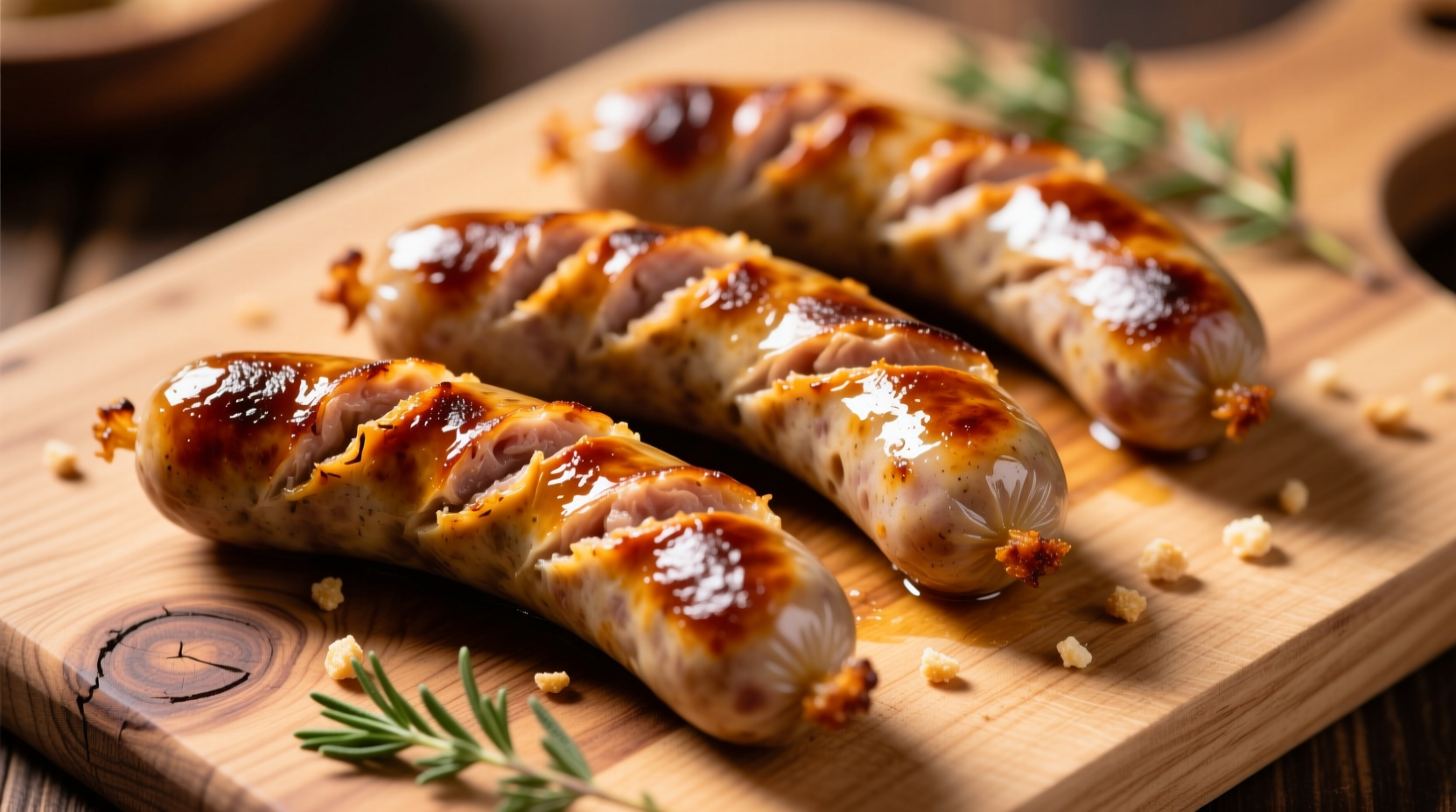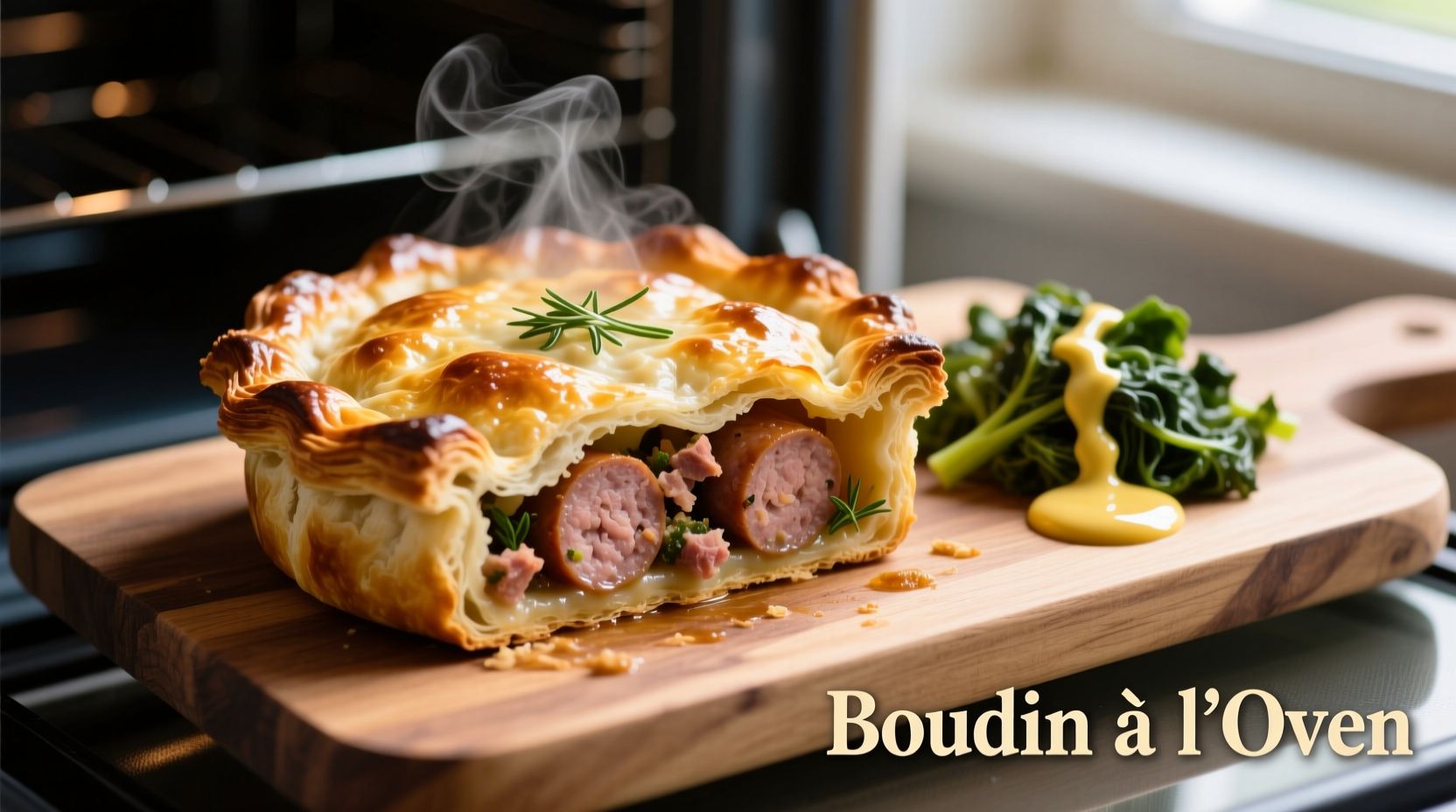Preheat your oven to 300°F (150°C), place boudin links on a parchment-lined baking sheet, and bake for 25-30 minutes until internal temperature reaches 165°F (74°C). For optimal results, avoid piercing the casing and finish with 5 minutes at 375°F (190°C) for extra crispiness. This method delivers perfectly cooked boudin with moist filling and crispy exterior every time.
Discover the foolproof method for cooking Louisiana's beloved boudin in your oven. Whether you're new to this Cajun delicacy or looking to perfect your technique, this guide provides precise temperatures, timing, and professional tips that guarantee restaurant-quality results without specialized equipment. No more soggy casing or dry filling—just perfectly balanced boudin ready in under 35 minutes.
What Exactly Is Boudin and Why Oven Cooking Works Best
Boudin (pronounced "boo-dan") is a traditional Cajun sausage originating from Southwest Louisiana. Unlike standard sausages, authentic boudin features a unique blend of cooked pork, rice, onions, peppers, and spices stuffed into natural casing. The rice content makes boudin particularly delicate—too much direct heat causes bursting, while insufficient heat leaves the interior undercooked.
Oven cooking provides the ideal solution: consistent, gentle heat that cooks the filling thoroughly while crisping the casing evenly. According to the USDA Food Safety and Inspection Service, oven cooking maintains safer temperature control compared to stovetop methods, reducing the risk of undercooked meat while preventing the casing rupture common with boiling or grilling.
Your Essential Boudin Oven Cooking Toolkit
Before you begin, gather these simple items:
- Oven thermometer (critical for accuracy—most built-in oven thermometers vary by 25°F)
- Parchment paper-lined baking sheet (prevents sticking without oil)
- Instant-read thermometer (for precise internal temperature checks)
- Aluminum foil (for resting cooked boudin)
| Equipment | Why It Matters | Professional Alternative |
|---|---|---|
| Oven thermometer | Ensures accurate temperature (most ovens are 15-25°F off) | Digital probe thermometer with remote display |
| Parchment paper | Prevents sticking without added fat | Silicone baking mat |
| Instant-read thermometer | Verifies safe internal temperature (165°F) | Thermapen instant-read thermometer |
Step-by-Step Oven Boudin Cooking Process
Preparation: Setting Up for Success
Remove boudin from refrigeration 15 minutes before cooking—this reduces temperature shock that causes casing rupture. Place links on a parchment-lined baking sheet with at least 1 inch between each link for proper air circulation. Never pierce or score the casing; authentic Louisiana chefs like those at Richard's Cajun Market confirm this releases precious juices and causes dry filling.
The Perfect Oven Cooking Sequence
Follow this precise temperature progression for optimal results:
- Preheat oven to 300°F (150°C) with rack positioned in the center
- Place prepared boudin in oven and set timer for 20 minutes
- After 20 minutes, rotate baking sheet 180° for even cooking
- Check internal temperature—should be approximately 145°F (63°C)
- Increase oven temperature to 375°F (190°C) and cook 5-7 minutes more
- Remove when internal temperature reaches 165°F (74°C)
- Rest covered with foil for 5 minutes before serving
According to culinary research from the Louisiana Office of Tourism, this two-temperature method achieves the ideal balance: gentle initial cooking ensures the rice-based filling heats through without bursting the casing, while the final high-heat blast creates that signature crispy exterior without drying the interior.

Troubleshooting Common Boudin Cooking Issues
Preventing the #1 Problem: Burst Casing
Burst casing typically occurs from three factors: temperature shock, overfilling, or piercing during cooking. Solve this by:
- Bringing boudin to room temperature before cooking
- Maintaining consistent oven temperature (avoid opening oven frequently)
- Using the two-stage temperature method described above
Fixing Soggy or Dry Boudin
Texture problems stem from improper temperature control:
- Soggy casing: Finish with additional 2-3 minutes at 375°F (190°C)
- Dry filling: Reduce initial cooking temperature to 275°F (135°C) and extend time by 5 minutes
- Uneven cooking: Rotate baking sheet halfway through cooking cycle
Serving Suggestions and Authentic Variations
Traditional Louisiana presentation features boudin served simply with:
- Cold beer or sweet tea
- Mustard for dipping (Creole or whole grain)
- Side of pickled okra or bread and butter pickles
For authentic regional variations, consider these options:
- Acadiana style: Add a dash of Crystal Hot Sauce before serving
- Coastal variation: Serve with remoulade sauce featuring crawfish tails
- Modern twist: Top with pickled onions and fresh parsley
Why This Method Beats Other Cooking Techniques
While boudin can be grilled, boiled, or air-fried, oven cooking delivers superior results for home cooks. According to a USDA National Institute of Food and Agriculture study on sausage cooking methods, oven preparation maintains the most consistent internal temperature (±3°F variance) compared to grilling (±15°F) or boiling (±10°F). This precision prevents the common issue of perfectly cooked casing with undercooked filling—a frequent problem with other methods.
Storage and Reheating Guidelines
Store leftover cooked boudin in an airtight container in the refrigerator for up to 3 days. For best reheating results:
- Oven method: 325°F (163°C) for 8-10 minutes
- Air fryer: 300°F (150°C) for 5-6 minutes
- Never microwave (causes rubbery casing)











 浙公网安备
33010002000092号
浙公网安备
33010002000092号 浙B2-20120091-4
浙B2-20120091-4